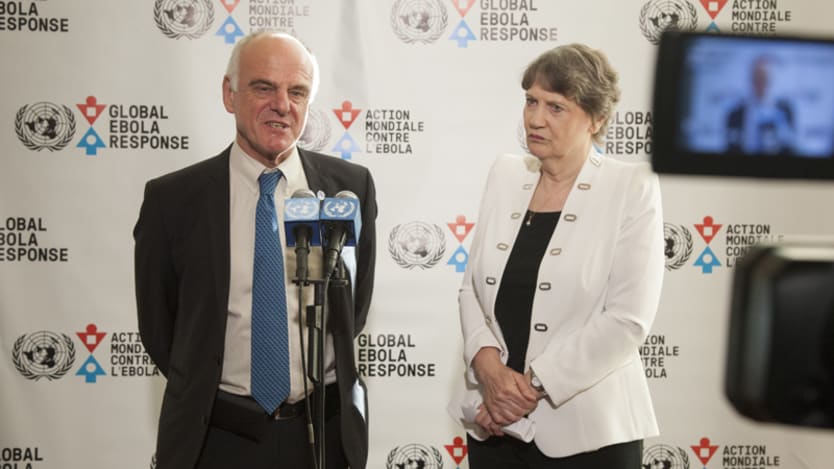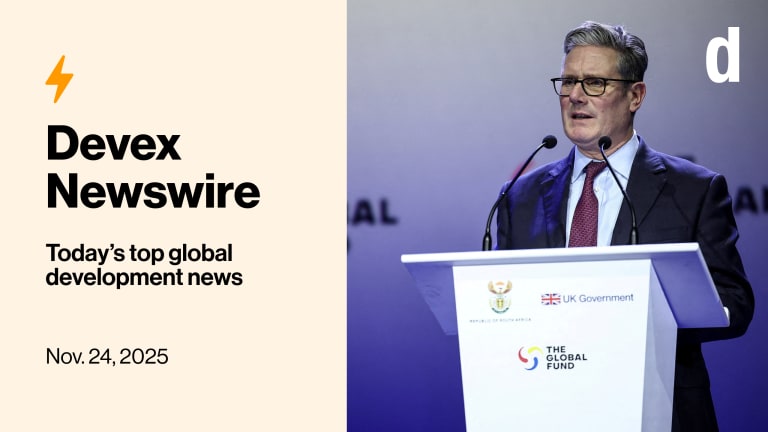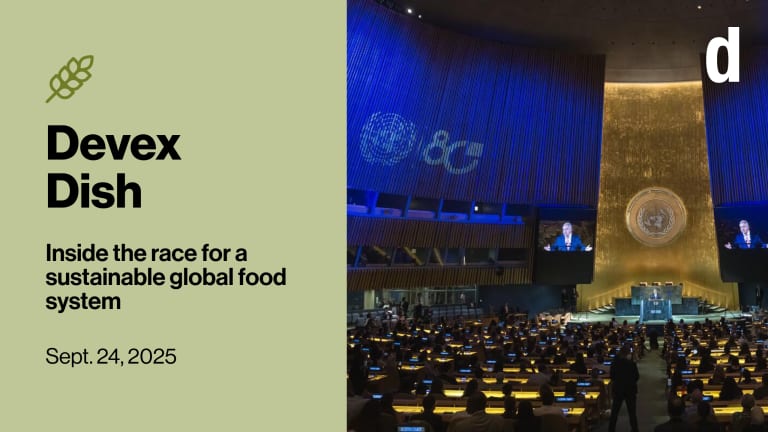
They came. They saw. They pledged.
With the cloud of new Ebola cases in Liberia hanging over last week’s U.N. Ebola Recovery Conference, governments and private sector partners showed up in New York determined to prove their commitment to ending the outbreak once and for all. For hours on Thursday, they listened as representatives from Liberia, Guinea and Sierra Leone presented their Mano River Union Plan for recovering from the crisis and restarting their collective economic development, imploring donors to support — rather than go around — the plans.
Then on Friday, after hearing the details of these plans, donors delivered their statements of support for the countries — making sure to tout the contributions they had already made and lessons they had learned, and pledging significant new assistance to rebuild the three affected countries stronger than they were before Ebola.
The donors’ pledges ranged in amount (from $1 million from Azerbaijan to $650 million from the World Bank) and in scope (from health worker training to nutrition supplementation to hygiene programs in schools). All told, the U.N. Development Program reported that donors had pledged $3.4 billion, bringing the total resources pledged for the recovery of the Ebola-affected countries to an astounding total of more than $5 billion.
You would think with a headline figure like that, partners would have left the conference feeling ecstatic, or at least adequately armed for the rebuilding challenges ahead. And yet there was still so much confusion over the pledges made that it was hard to leave with a clear verdict on what had been accomplished. What money was really new and additional, versus old and repackaged? Where does the ongoing Ebola response end and the recovery effort begin — and can we even tell the difference on the ground anymore? What was our true baseline need for recovery, and what gaps did we fill?
For those of us who have tried to track resource flows throughout the Ebola crisis, these questions have become a recurring nightmare. After more than six months spent building and updating our own Ebola resource tracker, we learned a clear lesson that we outlined in a new white paper last week: The tools we have today for tracking resources in a crisis are not fit-for-purpose. In many instances, it is possible to find information about one category of a donor’s pledge, but there is no “one-stop-shop” that donors, implementers and the public can use to reliably understand, measure and compare what amounts and types of resources have been pledged, what resources have been disbursed, and what gaps remain unfilled.
While financial accountability may seem like a boring accounting exercise, we believe it’s actually a matter of life or death. If we don’t know what has been promised and what has been delivered, we can’t adequately match promised resources to needs on the ground. That means gaps cannot be easily identified, and time lags will result in more lives lost. Confusion over pledges makes it difficult to hold donors accountable, which may leave millions of promised funds unspent. Conversely, better understanding about what donors have disbursed will give advocates clearer grounds for full-throated praise of those who have stepped up and made impactful contributions — just like many of them did on Friday at the U.N.
These challenges, unfortunately, are not new. Analysis of past crises, such as the 2004 Indian Ocean tsunami and the 2010 Haiti earthquake, reveals remarkably similar challenges in tracking how much money was pledged and where it ended up. In an age of unprecedented access to technology, it’s frustrating to see our development and humanitarian communities continue to make the same mistakes.
In order for advocates to have data that will allow them to hold donors accountable for their promises, there must be a globally accepted, well-resourced tracking system that can collect and provide unambiguous information — ideally with the political teeth to ensure consistency and fairness across donors. At the same time, a system is only as good as donors’ willingness to supply it with good information. Therefore, donors must provide both commitment and disbursement amounts, while also agreeing to a clear, consistent definition of disbursement; report humanitarian assistance according to the standards set by the International Aid Transparency Initiative; and more generally, abide by ONE’s “TRACK principles,” making commitments that are: Transparent, Results-oriented, clear about which resources are Additional and which have any Conditions, and Kept.
It is not too early to start building such a system, even though we may have missed the chance to fully account for resources in the current Ebola crisis. As we speak, thousands of donors, civil society partners, and technical experts are gathering in Addis Ababa for the third International Conference on Financing for Development. Among other hot topics discussed there, many (including ONE) will be pushing for strong commitments to donor transparency and for investments in mapping and filling data gaps — all as part of the wider “data revolution.”
At least four high-level Ebola panels or initiatives are also underway, tasked with learning lessons from the crisis and making concrete recommendations for the future. These include the U.N. secretary-general’s high-level panel, the World Health Organization’s independent Ebola Interim Assessment Panel, the U.S. Institute of Medicine’s effort to create a Global Health Risk Framework, and an Independent Panel on the Global Response to Ebola. We are encouraged that at least the Institute of Medicine effort will look at financial accountability and hope that others will also take up this topic.
Ultimately, if the existing mechanisms do not change to more consistently hold donors accountable for their pledges, there is a real risk that promises could continue to be unfulfilled without any real consequence. Until we can resolve this challenge, we are doomed to repeat our collective mistakes, and lose time, resources and lives in the next crisis.
Join the Devex community and access more in-depth analysis, breaking news and business advice — and a host of other services — on international development, humanitarian aid and global health.








